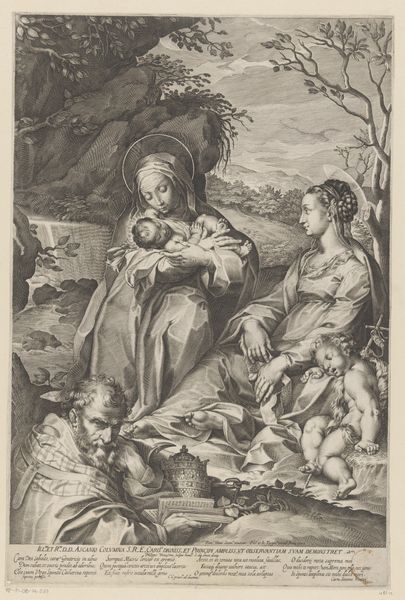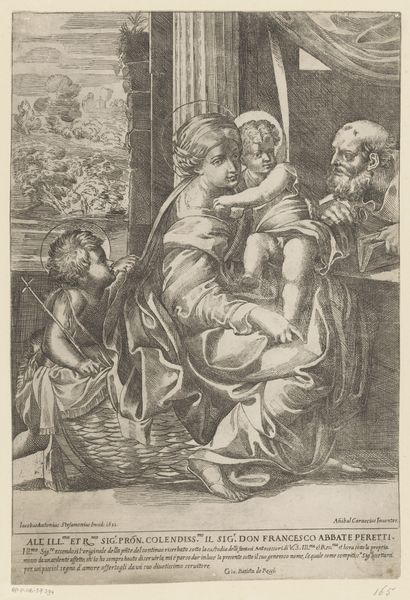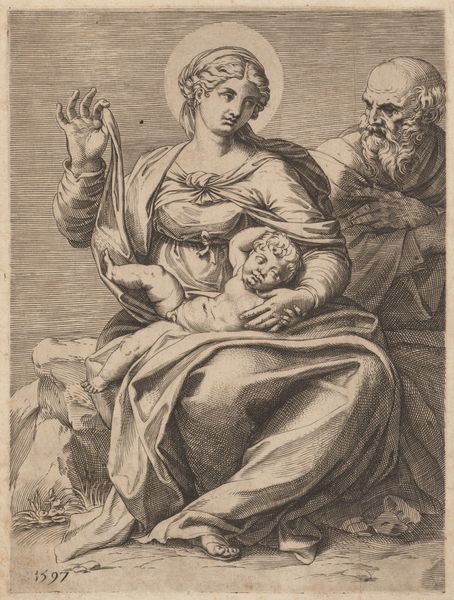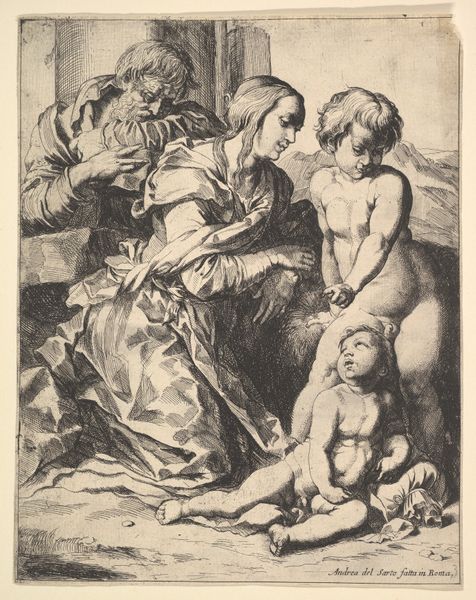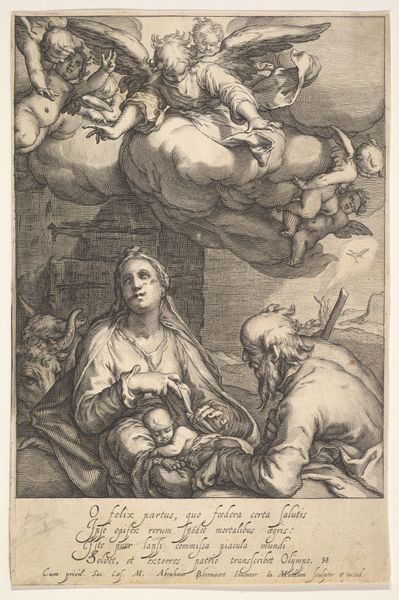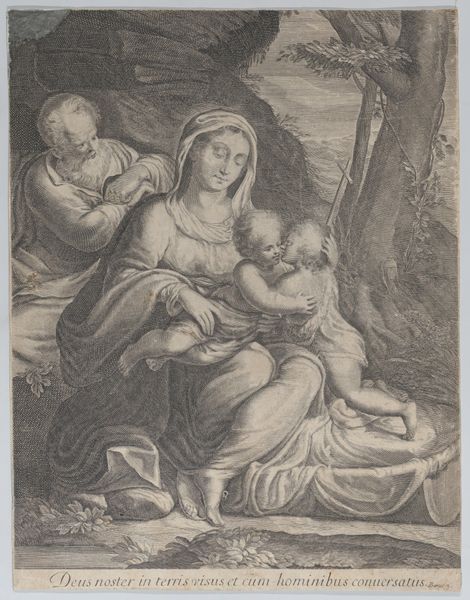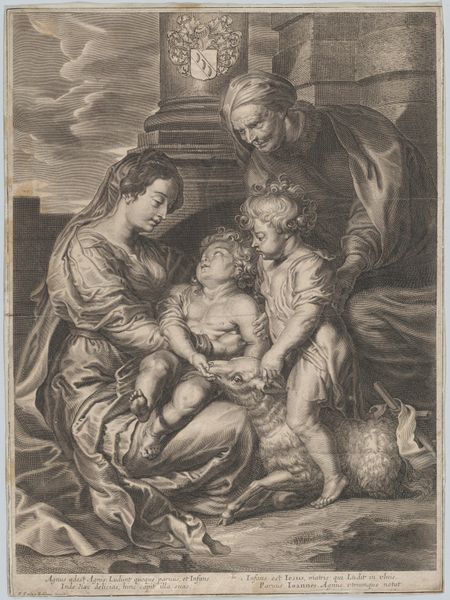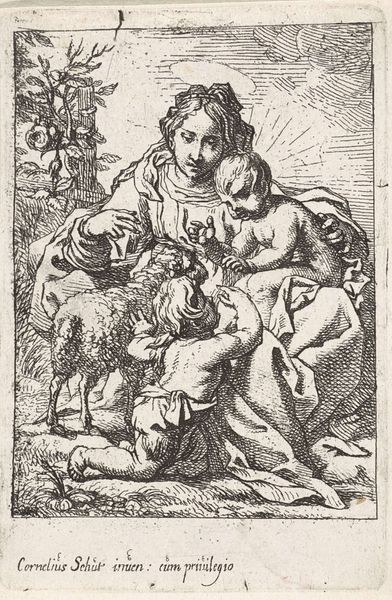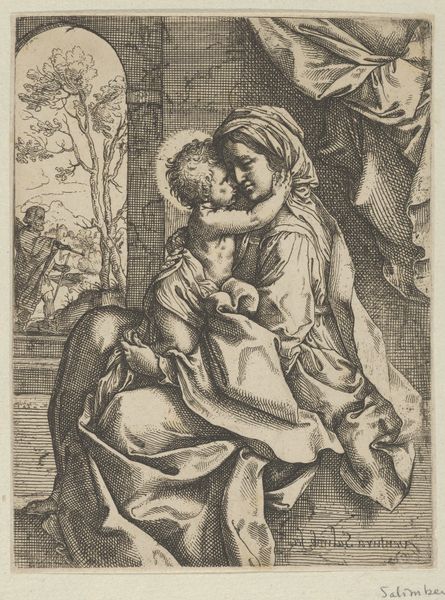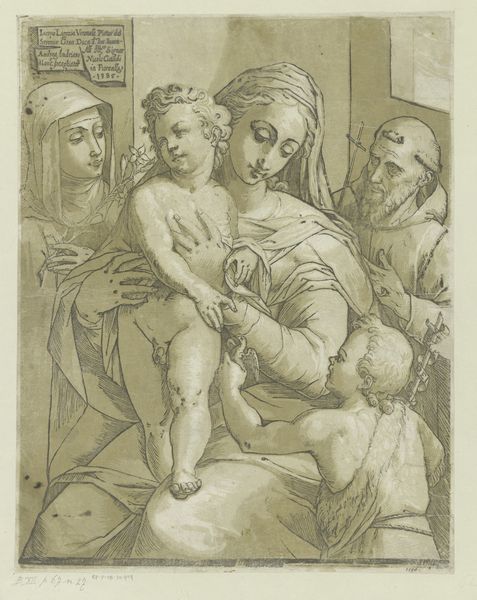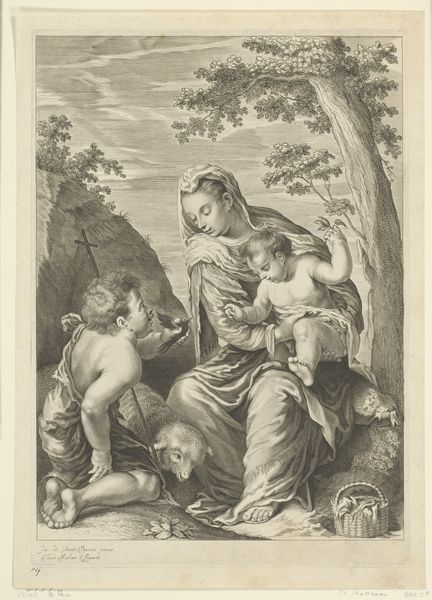
Virgin and Child with the infant Saint John the Baptist 1576 - 1613
0:00
0:00
drawing, print, intaglio, engraving
#
portrait
#
drawing
# print
#
intaglio
#
figuration
#
history-painting
#
italian-renaissance
#
engraving
Dimensions: Sheet (Trimmed): 4 3/4 × 3 11/16 in. (12 × 9.4 cm)
Copyright: Public Domain
Editor: Here we have an engraving, "Virgin and Child with the infant Saint John the Baptist," dating roughly from 1576 to 1613. The artist is anonymous. I'm struck by the detailed hatching; it gives a real sense of depth, particularly considering the printmaking process. How do you read the use of the medium here? Curator: The intaglio print is crucial, because it allowed for wide dissemination of imagery. Consider the cultural demand for these devotional images during the Counter-Reformation. Anonymous’s labour, painstakingly rendered with those fine lines, became a commodity circulating through early modern Europe. The image’s value is thus intertwined with its reproducible nature, isn’t it? It bridges 'high' art and practical, accessible devotion. Editor: So, you’re saying the printmaking aspect elevates the meaning beyond just the religious subject matter? That the materiality changes our perception? Curator: Absolutely. Think about the paper itself, where it comes from. And then look at the labor involved in making and distributing the printing plate, which, as indicated by the text at the bottom of the engraving, could very well be the work of a reproductive printmaker rather than an independent artist expressing their singular talent. The whole means of production and exchange shapes the meaning. Where does the artistic ‘aura’ reside, then? Editor: That really challenges how I typically think about Renaissance art, moving beyond individual genius toward this idea of distributed artistic production. Curator: Precisely! Seeing art this way illuminates how value is assigned, labor is structured, and beliefs are propagated. The material conditions define so much of the work's historical importance. Editor: That's a fascinating perspective. It has really pushed me to rethink the role of the artist and the artwork’s distribution process during that era. Curator: It forces us to look beyond the aesthetic and consider the very structures that allowed this image to exist.
Comments
No comments
Be the first to comment and join the conversation on the ultimate creative platform.
